
The Timeless Charm of Old Delhi
Discover the timeless charm of Old Delhi, where Mughal splendor meets bustling bazaars and historic landmarks in the heart of India's capital.
Old Delhi, the historic heart of India's capital, is a mesmerizing blend of the old and the new. Stepping into this neighborhood is like traveling back in time, where the echoes of Mughal grandeur still linger amidst the bustling modern-day chaos. The labyrinthine streets are an intriguing maze, filled with hidden gems and iconic landmarks that tell tales of a bygone era. Begin your journey at the imposing Red Fort, a UNESCO World Heritage site, which stands as a testament to the architectural brilliance of the Mughal era. Just a short walk away, the Jama Masjid, one of the largest mosques in India, offers a serene escape with its magnificent domes and towering minarets. Climb to the top of its minaret for a panoramic view of the city below. No visit to Old Delhi would be complete without experiencing the vibrant markets. Chandni Chowk, the main thoroughfare, is a sensory overload with its bustling bazaars, street food vendors, and centuries-old shops. Here, you can savor mouth-watering local delicacies like parathas, jalebis, and the famous Karim's kebabs. The narrow lanes of Khari Baoli, Asia's largest spice market, are a fragrant paradise for food lovers and cooks. As you explore, you'll find yourself enchanted by the juxtaposition of ancient havelis (mansions) and contemporary life. Discover the cultural richness at every corner, from traditional crafts to religious sites that co-exist harmoniously. Old Delhi is not just a neighborhood; it is an experience that immerses you in the essence of India's rich history and vibrant culture.
Local tips in Old Delhi
- Wear comfortable walking shoes as the streets are narrow and often crowded.
- Visit early in the morning or late in the evening to avoid the midday rush and heat.
- Carry some cash, as many small vendors and street food stalls do not accept credit cards.
- Hire a local guide to uncover hidden gems and gain deeper insights into the history and culture.
- Be cautious of your belongings in crowded areas to avoid pickpocketing.
- Try the street food but make sure to choose stalls that are busy and have a good turnover.
The Timeless Charm of Old Delhi
Old Delhi, the historic heart of India's capital, is a mesmerizing blend of the old and the new. Stepping into this neighborhood is like traveling back in time, where the echoes of Mughal grandeur still linger amidst the bustling modern-day chaos. The labyrinthine streets are an intriguing maze, filled with hidden gems and iconic landmarks that tell tales of a bygone era. Begin your journey at the imposing Red Fort, a UNESCO World Heritage site, which stands as a testament to the architectural brilliance of the Mughal era. Just a short walk away, the Jama Masjid, one of the largest mosques in India, offers a serene escape with its magnificent domes and towering minarets. Climb to the top of its minaret for a panoramic view of the city below. No visit to Old Delhi would be complete without experiencing the vibrant markets. Chandni Chowk, the main thoroughfare, is a sensory overload with its bustling bazaars, street food vendors, and centuries-old shops. Here, you can savor mouth-watering local delicacies like parathas, jalebis, and the famous Karim's kebabs. The narrow lanes of Khari Baoli, Asia's largest spice market, are a fragrant paradise for food lovers and cooks. As you explore, you'll find yourself enchanted by the juxtaposition of ancient havelis (mansions) and contemporary life. Discover the cultural richness at every corner, from traditional crafts to religious sites that co-exist harmoniously. Old Delhi is not just a neighborhood; it is an experience that immerses you in the essence of India's rich history and vibrant culture.
Iconic landmarks you can’t miss
Lal qila
Explore the grandeur of Lal Qila, a UNESCO World Heritage Site in New Delhi, showcasing Mughal architecture and rich historical significance.

Haveli Mirza Ghalib
Discover the enchanting world of Urdu poetry at Haveli Mirza Ghalib, a historic monument celebrating the legacy of one of India's literary giants in bustling Chandni Chowk.

Razia Sultan Tomb
Explore the Razia Sultan Tomb in New Delhi, a historical landmark dedicated to India's first female ruler, surrounded by exquisite Mughal architecture and serenity.

Diwan-i-Khas
Explore the architectural brilliance of Diwan-i-Khas, a stunning Mughal masterpiece in Delhi's Red Fort, showcasing history and artistry in perfect harmony.

Mumtaz Mahal
Explore the Mughal heritage at Mumtaz Mahal, an architectural marvel nestled in the historical Red Fort of Delhi.

Ghantaghar Chandni Chowk
Experience the rich heritage and vibrant life at Ghantaghar Chandni Chowk, a historical landmark in the heart of Delhi.

Rang Mahal
Discover the breathtaking beauty and rich history of Rang Mahal, the Palace of Colors, nestled in the heart of Old Delhi's majestic Red Fort.
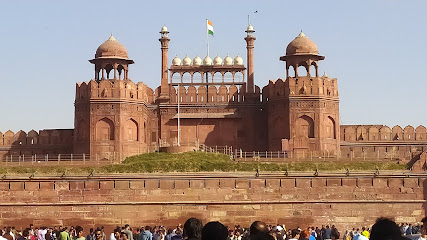
Khas Mahal
Discover the exquisite Khas Mahal, a stunning Mughal palace within Delhi's Red Fort, showcasing rich history and architectural brilliance.

Shah Burj
Explore the majestic Shah Burj in Delhi, a stunning gateway to the Mughal era, rich in history and architectural beauty.

Old City
Explore Old City, a historical landmark in New Delhi, rich in culture, cuisine, and architectural marvels that define India's heritage.

Essential places to dine
Haldiram's - Chandni Chowk
Discover the authentic taste of India at Haldiram's - Chandni Chowk, where vegetarian delights meet rich culinary traditions.

Al Jawahar Restaurant
Discover authentic Mughlai cuisine at Al Jawahar Restaurant - a culinary gem in New Delhi's historic district.
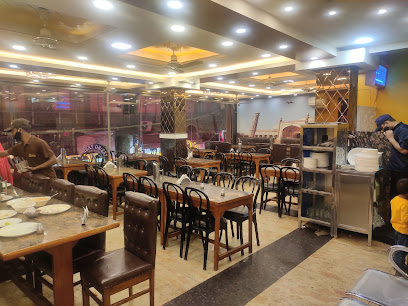
Kake Di Hatti
Experience authentic North Indian flavors at Kake Di Hatti - a must-visit Punjabi vegetarian restaurant in Delhi's historic Chandni Chowk.

PT. Gaya Prashad Shiv Charan
Discover the authentic taste of North India at PT. Gaya Prashad Shiv Charan—home to delectable parathas in bustling Chandni Chowk.

Wah Ji Wah
Experience the vibrant flavors of India at Wah Ji Wah, where traditional cuisine meets modern dining in Old Delhi's historic heart.

Smile Darbar A Family Restaurant
Discover the flavors of India at Smile Darbar, where every meal is a celebration of taste and tradition in the heart of Delhi.

Lakhori
Discover authentic Mughlai cuisine in Old Delhi at Lakhori - where tradition meets taste in every dish.
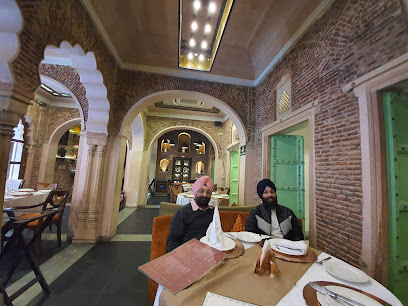
Kitchen tales
Discover authentic North Indian vegetarian delights at Kitchen Tales in Chandni Chowk, where every dish tells a story.

Jawahar Hotel
Discover authentic Indian flavors at Jawahar Hotel in Old Delhi - a culinary gem near Jama Masjid offering unforgettable dining experiences.

Milan Rasoi - Best Restaurant in Delhi
Experience authentic Chinese flavors at Milan Rasoi in Delhi's bustling Chandni Chowk – a culinary gem for food lovers.

Markets, malls and hidden boutiques
Om Parkash Jawahar Lal
Explore Om Parkash Jawahar Lal in Chandni Chowk for a unique blend of traditional and modern Indian fashion, a must-visit for every traveler.

Lehenga House - Bridal Lehenga Store in Delhi
Discover the elegance of traditional bridal wear at Lehenga House in Delhi, where dreams become reality with exquisite lehengas and personalized service.
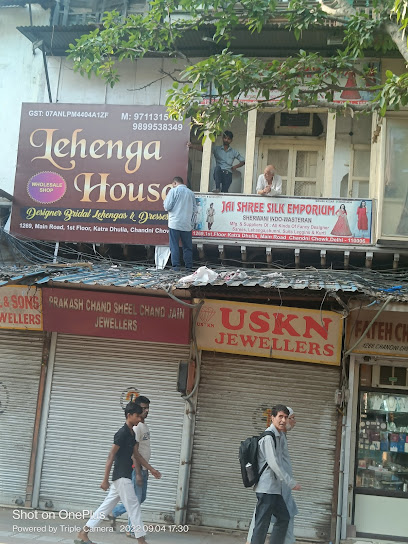
MéLANgE-Unique Gift Collection
Discover unique gifts and souvenirs at MéLANgE, a charming shop in Chandni Chowk, New Delhi, showcasing the best of Indian craftsmanship.

Vintage Crafts
Discover a treasure trove of antiques and vintage collectibles at Vintage Crafts in Chandni Chowk, New Delhi - a must-visit for history enthusiasts.
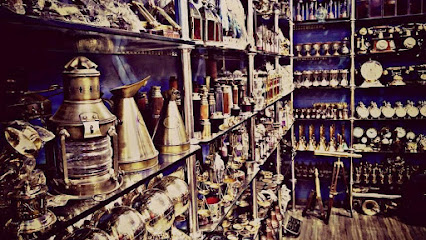
Bal Kishan Das & Sons
Explore Bal Kishan Das & Sons in Chandni Chowk for exquisite bridal wear and designer clothing—an essential stop for fashion enthusiasts in New Delhi.

Jain Art Emporium |Brass God Statues| Brass Art Effects
Explore Jain Art Emporium in Chandni Chowk for exquisite brass god statues and unique gifts that reflect India's rich cultural heritage.

Novelty Emporium
Explore the vibrant fashion at Novelty Emporium, a must-visit clothing store in New Delhi, offering a unique blend of traditional and contemporary styles.

Luv Indiya Concepts
Discover authentic Indian souvenirs and gifts at Luv Indiya Concepts, located near the historic Red Fort in Delhi, celebrating local craftsmanship.

Victorian Emmpire U-O Sewa Singh and Sons
Explore Victorian Empire U/O Sewa Singh and Sons for exquisite clothing, unique handicrafts, and authentic Indian craftsmanship in the heart of Delhi.

Old Delhi
Explore the vibrant streets of Old Delhi, where history, culture, and shopping come together in a rich tapestry of experiences.

Essential bars & hidden hideouts
Red Resto Bar
Discover the lively Red Resto Bar in New Delhi, where delicious drinks, engaging music, and a vibrant atmosphere await every visitor.

Bar Company
Experience the vibrant nightlife of New Delhi at Bar Company, where great drinks and delicious food come together in a lively atmosphere.

Baatli Bar
Experience vibrant nightlife at Baatli Bar in Kashmere Gate, New Delhi, with great drinks, lively music, and a welcoming atmosphere.

MGM CLUB
Discover the vibrant MGM Club in Daryaganj, New Delhi - a perfect blend of lively bar atmosphere and exquisite continental dining.

Appreciate
Discover the lively spirit of New Delhi at Appreciate Bar, your go-to destination for cocktails, camaraderie, and unforgettable evenings.

BENCH & BAR CLUB
Discover the vibrant nightlife at Bench & Bar Club in Old Delhi, where great drinks and lively atmosphere create unforgettable experiences.

Ansari sahab
Discover the lively ambiance of Ansari Sahab, a charming lounge in Old Delhi, offering local flavors and a cozy retreat amidst the vibrant Chawri Bazar.

Revel : Lounge, Cafe and Bar
Discover the perfect blend of relaxation and vibrant flavors at Revel, a cozy lounge cafe and bar in the heart of Chandni Chowk, Delhi.

Lalla Singh
Discover the vibrant nightlife at Lalla Singh, a charming bar in Chandni Chowk, New Delhi, offering a delightful atmosphere and diverse drink selection.

Manoj Sarpanch Dhana Narsan Bar
Discover the vibrant nightlife of Old Delhi at Manoj Sarpanch Dhana Narsan Bar, where culture, drinks, and great company come together in a lively atmosphere.
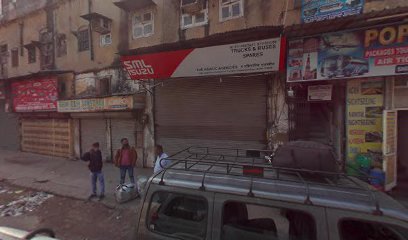
Local Phrases
-
- Helloनमस्ते
[namaste] - Goodbyeअलविदा
[alvida] - Yesहाँ
[haan] - Noनहीं
[nahi] - Please/You're welcomeकृपया
[krupaya] - Thank youधन्यवाद
[dhanyavad] - Excuse me/Sorryमाफ़ कीजिए
[maaf kijiye] - How are you?आप कैसे हैं?
[aap kaise hain?] - Fine. And you?ठीक हूँ। और आप?
[thik hoon. aur aap?] - Do you speak English?क्या आप अंग्रेज़ी बोलते हैं?
[kya aap angrezi bolte hain?] - I don't understandमुझे समझ में नहीं आया
[mujhe samajh mein nahi aaya]
- Helloनमस्ते
-
- I'd like to see the menu, pleaseकृपया मेनू देखना चाहूँ
[krupaya menu dekhna chahoon] - I don't eat meatमैं मांस नहीं खाता
[main maans nahi khata] - Cheers!चियर्स!
[cheers!] - I would like to pay, pleaseकृपया मैं भुगतान करना चाहूँ
[krupaya main bhugtan karna chahoon]
- I'd like to see the menu, pleaseकृपया मेनू देखना चाहूँ
-
- Help!मदद!
[madad!] - Go away!चले जाओ!
[chale jao!] - Call the Police!पुलिस को बुलाओ!
[police ko bulao!] - Call a doctor!डॉक्टर को बुलाओ!
[doctor ko bulao!] - I'm lostमैं खो गया हूँ
[main kho gaya hoon] - I'm illमुझे बीमारी है
[mujhe bimari hai]
- Help!मदद!
-
- I'd like to buy...मैं ... खरीदना चाहूँ
[main ... khareedna chahoon] - I'm just lookingमैं बस देख रहा हूँ
[main bas dekh raha hoon] - How much is it?यह कितने का है?
[yah kitne ka hai?] - That's too expensiveयह बहुत महंगा है
[yah bahut mehnga hai] - Can you lower the price?क्या आप कीमत कम कर सकते हैं?
[kya aap kimat kam kar sakte hain?]
- I'd like to buy...मैं ... खरीदना चाहूँ
-
- What time is it?अभी कितने बजे हैं?
[abhi kitne baje hain?] - It's one o'clockएक बजे हैं
[ek baje hain] - Half past (10)(10) के बादसवा बजे
[(das) ke baadsava baje] - Morningसुबह
[subah] - Afternoonदोपहर
[dopahar] - Eveningशाम
[shaam] - Yesterdayकल
[kal] - Todayआज
[aaj] - Tomorrowकल
[kal] - 1एक
[ek] - 2दो
[do] - 3तीन
[teen] - 4चार
[chaar] - 5पांच
[paanch] - 6छह
[chhah] - 7सात
[saat] - 8आठ
[aath] - 9नौ
[nau] - 10दस
[das]
- What time is it?अभी कितने बजे हैं?
-
- Where's a/the...?... कहाँ है?
[... kahan hai?] - What's the address?पता क्या है?
[pata kya hai?] - Can you show me (on the map)?क्या आप मुझे दिखा सकते हैं (नक्शे पर)?
[kya aap mujhe dikha sakte hain (naksha par)?] - When's the next (bus)?अगली (बस) कब है?
[agli (bas) kab hai?] - A ticket (to ....)एक टिकट (.... के लिए)
[ek ticket (.... ke liye)]
- Where's a/the...?... कहाँ है?
History of Old Delhi
-
In 1638, Mughal Emperor Shah Jahan commissioned the construction of Shahjahanabad, which would later be known as Old Delhi. This move symbolized the power and grandeur of the Mughal Empire, as the city became a significant political and cultural hub. The famous Red Fort and Jama Masjid were built during this period, showcasing the architectural brilliance of Mughal design.
-
Old Delhi played a pivotal role during the Indian Rebellion of 1857, also known as the First War of Independence. The city saw fierce battles as Indian soldiers and civilians rose against British rule. The aftermath led to significant changes in governance, with the British Crown taking direct control of India, marking the end of the Mughal Empire.
-
The partition of India in 1947 had a profound impact on Old Delhi. The city became a refuge for millions of displaced people from both India and Pakistan. The sudden influx of refugees transformed the demographic and cultural landscape of Old Delhi, leading to the establishment of new communities and a blending of cultures.
-
Old Delhi has long been a cultural melting pot, where various communities, including Hindus, Muslims, and Sikhs, coexisted. This diversity is reflected in the area's architecture, cuisine, and festivals. Notable landmarks like Chandni Chowk serve as hubs of commerce and social interaction, embodying the rich tapestry of life that characterizes Old Delhi.
-
In recent decades, Old Delhi has faced challenges such as urbanization and pollution. However, there have been concerted efforts to preserve its historical sites and cultural heritage. Initiatives by the government and local organizations aim to maintain the integrity of Old Delhi while promoting sustainable tourism, ensuring that its rich history continues to thrive amidst modern changes.
Old Delhi Essentials
-
Old Delhi is well-connected to other parts of the city. The nearest metro station is Chandni Chowk on the Yellow Line, which is about 2 kilometers from the Red Fort. You can catch a taxi or an auto-rickshaw from various parts of Delhi. From the Indira Gandhi International Airport, you can take the Airport Express Metro Line to New Delhi Station, then transfer to the Yellow Line to reach Chandni Chowk. Alternatively, local buses and app-based cab services are readily available.
-
Old Delhi is best explored on foot, as many of its attractions are closely packed together. However, you can also use cycle rickshaws for short distances. The Delhi Metro is an efficient option for accessing nearby areas, with the Chandni Chowk metro station serving as a key hub. Local buses and auto-rickshaws are also available, but traffic can be congested, so plan accordingly.
-
Old Delhi is generally safe for tourists, but caution is advised. Areas around Chandni Chowk and Jama Masjid can become crowded, making it essential to be aware of your belongings. While violent crime is rare, petty theft and scams targeting tourists can occur. It is advisable to avoid deserted alleys and stay vigilant, especially at night.
-
In case of an emergency, dial 112 for police, ambulance, or fire services. Local hospitals and clinics are available, but it is advisable to have travel insurance. For minor health issues, pharmacies can provide over-the-counter medications. Always keep a list of emergency contacts handy.
-
Fashion: Do dress modestly, especially when visiting religious sites. Avoid shorts and sleeveless tops. Religion: Do respect local customs; cover your head when entering mosques. Public Transport: Do offer your seat to elderly passengers. Don't eat or drink on public transport. Greetings: Do greet locals with a smile and a polite nod. Eating & Drinking: Do try street food but ensure it is fresh. Don't refuse food offerings, as it can be seen as impolite.
-
To experience Old Delhi like a local, explore the bustling markets early in the morning. Visit the narrow lanes of Chandni Chowk for authentic street food and shop for traditional items. Engage with shopkeepers, who often have fascinating stories to share. Consider visiting during festivals like Diwali or Eid for a vibrant atmosphere, and always keep your camera ready for the bustling street scenes.
Nearby Cities to Old Delhi
-
Things To Do in Agra
-
Things To Do in Rishikesh
-
Things To Do in Jaipur
-
Things To Do in Shimla
-
Things To Do in Gwalior
-
Things To Do in Ranthambore
-
Things To Do in Pushkar
-
Things To Do in Kanpur
-
Things To Do in Manali
-
Things To Do in Amritsar
-
Things To Do in Lucknow
-
Things To Do in Lahore
-
Things To Do in Gujranwala
-
Things To Do in Jodhpur
-
Things To Do in Sialkot













